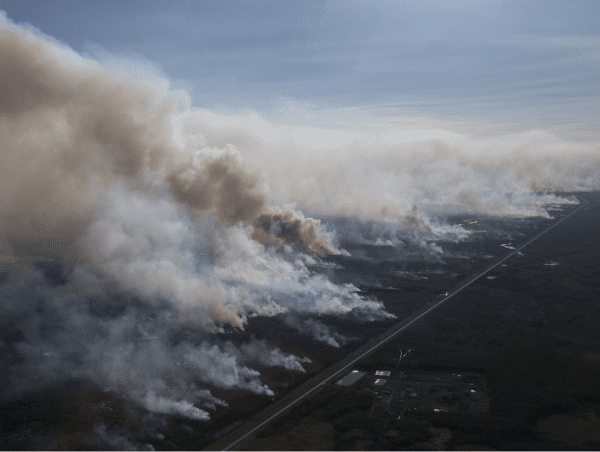Record-breaking heat and wildfires are creating “fire” clouds that can cause lightning.
When heat and smoke from large fires rise to the sky, they can create firestorms made up of pyrocumulus rain clouds. These thunderstorm clouds form their own weather, sometimes even tornadoes, which can then cause more fires. It’s a vicious cycle.
In Litton, 153 km south of Vancouver, Temperatures reached 49.5 degrees Celsius, a new Canadian national record. The heatwave preceded the wildfire, and as of Thursday, July 1, more than 8 hectares of fire had burned 90 per cent of Litton.
Dakota Smith, a meteorologist at the Colorado Cooperative Institute for Atmospheric Research, said the satellite shows “massive plumes of storm-causing rain clouds over Litton.”

“Another name for these ‘fire clouds’ is cumulonimbus flammagenitus, the second Latin word for ‘made of flame,'” the meteorologist said.
Everyone knows how thunderstorms form. The combination of moist, warm air and cold air usually forms thunderclouds. But when heat and moisture rise not from the ground but from a smoky forest fire, the cycle creates pyrocumulonimbus rain clouds.
These clouds can create both rain and thunderstorms. However, they often release powerful gusts of air, known as “downwind,” rather than water droplets. These downward currents can disperse smouldering embers and smoke over long distances by pushing dry air back toward the ground. This fuels the fire that produced the cloud in the first place.
NASA describes pyrocumulus rain clouds as a “cloud fire-breathing dragon.” These clouds can also generate hundreds of lightning strikes, which, in turn, can cause an even bigger fire.
In September 2020, a major wildfire in California produced one of the most significant such clouds ever seen in the United States.
Sometimes, if convection air in a cluster of pyrocumulus rain clouds forms a swirling circular column, the storm can transform into a “fire tornado.
Such an event occurred near Canberra, Australia, in 2003 after a forest fire burned for two weeks on the city’s outskirts.
Fires can cause several “fire” clouds. For example, in February and March 2009, huge wildfires burned 4,400 square kilometres of southeastern Australia. They caused three separate pyrocumulus rain clouds, some of which reached as high as 14 kilometres in the sky over the state of Victoria.
Higher temperatures and drier air are associated with more frequent and more intense wildfires. As the fires have become larger and more severe, the clouds caused by the fires have also become more widespread.
In 2002, about 17 such clouds were recorded in Canada, the United States and Mexico. Twenty years later, the average number of annual pyrocumulus clouds in western North America alone has risen to 25.
A feature of these clouds is that they can quickly rise into the stratosphere, polluting it. This layer of smoke can stay there for months to years.
A 2018 study showed that such a giant rain cloud sends out amounts of smoke particles commensurate with volcanic emissions.
Forest fires have a huge impact on forest ecosystems around the world. Nearly one-third of the world’s forests are engulfed by fire each year. As a result, trees are killed, grass, shrubs, mosses and lichens are burned, the soil is damaged, and the microorganisms that live in it are killed.
One of the main negative ecological consequences of fires is smoke and atmospheric pollution. Animals and people most often die not from fire but from smoke poisoning.
Smoke from large fires can spread for hundreds of kilometres. In addition, smoke in the lower layers of the atmosphere negatively affects people’s health, especially children, the elderly, pregnant women, those who have problems with cardiovascular disease.
Heavy smoke after fires delays the development of plants, so they produce less oxygen, and the forest is its leading supplier.
During intensive forest fires, the concentration of carbon monoxide in the air increases by almost 30 times compared to the background content, methane – by twice, carbon dioxide – by 8%.
Emissions from fires increase the greenhouse effect. Its essence lies in the fact that the sun’s rays, reflected from the ground, are transformed into long-wave thermal radiation, which is delayed by greenhouse gases. The result is an increase in air temperature.
According to calculations of scientists, when burning one kilogram of dry matter in the Siberian taiga, a little more than one and a half kilograms of carbon dioxide enters the atmosphere, a little more than one hundred grams of carbon monoxide and four grams of methane.
